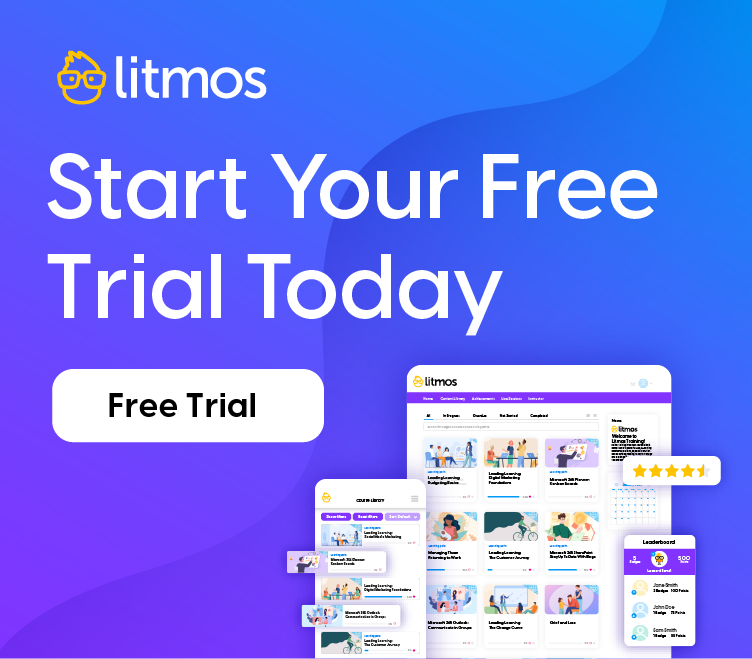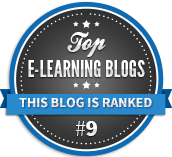Six Ways a Learning Management System Can Transform Your Nonprofit
Key Takeaways
|
Consistent and relevant training can be transformative for nonprofits, but the first step toward understanding how you can leverage learning technology effectively, is to identify which challenges your nonprofit needs to address with targeted training.
In this article, we’ll explore some of the most common issues facing nonprofits and provide insights on how to resolve them with the right training solutions.
Why is Training Important for Nonprofits?
Nonprofit staff who manage volunteers are tasked with the tricky balancing act. They need to find budget-friendly ways to keep fellow employees – as well as volunteers and board members – engaged and motivated, while staying on top of their own projects. In a perfect world, your nonprofit training solution should help staff achieve this balance by offering them tools that save time and administrative overhead. The right learning solution can help your employees prioritize the important work at hand, and maybe even give them back some time for their own professional growth within your organization.
Developing an effective training program that truly empowers your staff and volunteers isn’t as simple as coordinating an annual retreat or an orientation session. Nonprofit staff are low on time and resources. Nearly half of nonprofit staff are so burnt out that they’re planning to leave their roles in the next two years.
Meanwhile, nonprofit volunteers are seeking opportunities for connection and personal growth. Many get involved with nonprofit organizations in order to connect with other like-minded people and gain a sense of community, while others volunteer to gain valuable transferrable skills. Deloitte reports that 74% of volunteers do so to improve their sense of purpose, while 92% cite volunteering as an effective way to improve nonprofit leadership skills.
To create a shared sense of purpose amongst your staff and volunteers, and to provide them with the skills and competencies they crave, your organization needs to offer training that’s engaging, intuitive, and easy for everyone in your nonprofit to access wherever they are, whenever they need it.
Examples of Nonprofit Training Success
See how nonprofit organization, Sleep in Heavenly Peace (SHP) used their LMS to launch a volunteer training program in just 90 days. This webinar recording explores the challenges of launching nonprofit training and practical strategies for implanting a “just-in-time” learning strategy. Watch the “Live in 90 Days” nonprofit training webinar,
Common Nonprofit Training Challenges
Nonprofits have many challenges that can be alleviated or resolved through proper training. Here are three ways that a Learning Management System (LMS) can improve your nonprofit training initiatives and transform your organization for the better.
- Staff burnout is a real problem for nonprofit employees, who often care deeply about their work, but face mounting pressure to perform well with fewer resources or inadequate support. A third of employees who left their roles in 2021 did so due to a lack of opportunities for advancement. Providing professional development, mentorship, and skill-building opportunities for nonprofit employees can improve morale, productivity, and retention.These kinds of continuous learning opportunities not only improve your nonprofit’s culture, but can also help your team more effectively vet employees for internal hiring opportunities, which can reduce external recruitment and onboarding costs.
- Legal compliance is critical for nonprofit organizations, as they are often subject to numerous federal regulations. However, compliance training shouldn’t just be a “check the box activity.” Aside from potentially mitigating risk for your organization, compliance training can also create a more positive workplace culture. Litmos LMS offers an all-in-one solution that helps nonprofits build and enhance their compliance training programs with ease.
- Cyber security is also a major issue for nonprofits, who may have insufficient resources for addressing these concerns. According to Nonprofit Technology Enterprise Network (NTEN) 59% of nonprofits do not provide any cybersecurity training to their staff on a regular basis and only 20% have policies in place to address cyberattacks. Crafted and regularly updated by trusted subject matter experts, Litmos’ growing catalogue of pre-built cybersecurity courses provide nonprofit teams with the knowledge they need to identify and prevent cybersecurity attacks.
- Financial and time constraints are dueling and intertwined concerns for nonprofits. As donations dwindle, government funding shrinks, and operating costs rise due to inflation, the saying “time is money” rings especially true in the nonprofit sector. Tools that don’t require complex implementation, extensive onboarding, or extra subscriptions can thus make a real impact on the bottom line for nonprofit organizations. Learning solutions that offer built-in content authoring and a variety of APIs can help your organization set up training in days, not months.
- Change management is as important to nonprofits as it is to corporations, especially during times of economic uncertainty. Turnover rates are growing yearly, for grantmaking organizations in particular, with staff departures rising from 52 to 57 percent in 2023. Adapting to change is difficult for organizations that don’t equip their teams with consistent or effective training. When employees aren’t empowered to grow into newly-vacant roles, the gap in institutional knowledge can grow into a chasm. Choosing a dynamic and flexible LMS is a must for nonprofits that aim to stay agile and productive. Consider using a cloud-based LMS that everyone in your organization can access easily. Litmos allows learners and admins to log on from any location, at any time and our library of off-the-shelf courses can be accessed online, offline, or on any device.
- Tracking performance helps nonprofit volunteers and staff learn from mistakes, gain new skills, and even grow into new roles with greater responsibilities. But, for large or growing nonprofits with hybrid or remote work arrangements, the prospect of tracking learning metrics may seem overwhelming.An LMS that already integrates with your existing set of tools (like CRMs or HRIS software) can simplify how you monitor and optimize your learning programs. Litmos dashboards and custom reports allow nonprofits to analyze learner progress at a glance, and gives admins the power to automate assignment reminders and quizzes, so that managers can turn insights into actions.
Choosing an LMS for Your Nonprofit
Whether your nonprofit is in its early stages or well-established, investing in training resources can empower everyone in your organization to fulfill its mission.
The most effective nonprofit training solution not only addresses the challenges discussed in this article but serves to unify and motivate everyone within the organization, while providing leadership with actionable training insights. Saving time is also a top priority for every nonprofit employee, so it’s important to find a learning solution that gives your team more time to focus on the important work of fulfilling your mission, and less time worrying about IT or LMS implementation issues.
The learning solution you choose to deliver nonprofit training should provide the tools and support to help your team easily launch, monitor, and optimize learning initiatives. Top nonprofits trust Litmos as their training solution because our LMS is easy to implement and even easier to use. Strengthen nonprofit’s alignment, productivity, and impact with an all-in-one learning solution from Litmos. Start today with a free trial.




